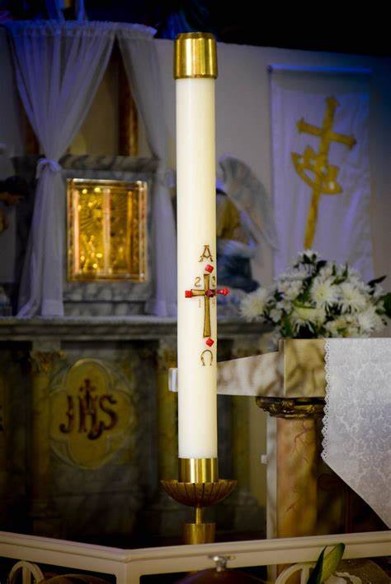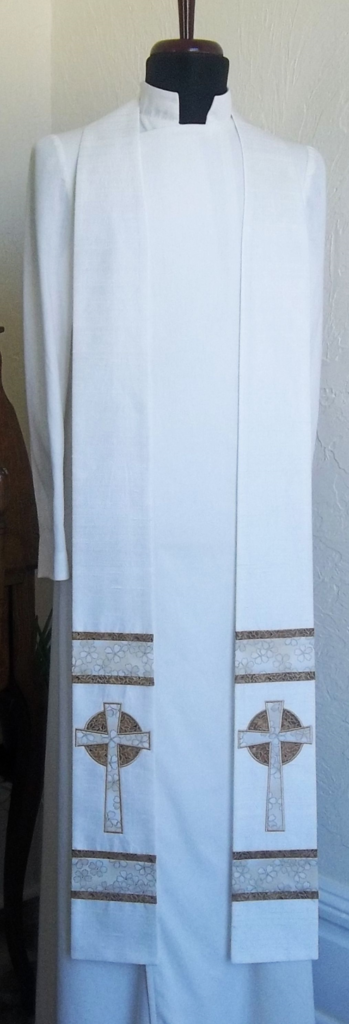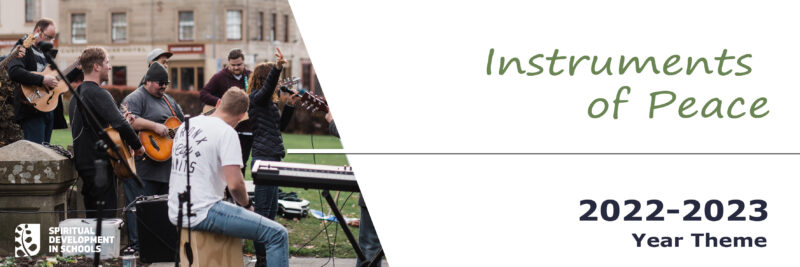Introduction
Animator
Dear children, we are during the joyful time of Easter, a time of happiness and peace because Jesus has risen! He is with us again! He is alive and will never leave us!
Song – Praise Ye The Lord
Story and Discussion
The Empty Tomb
One day Jesus died on the cross and was buried in a tomb.
- What is a tomb?
Wait for answers. Then give this answer while showing the image below.
A tomb is a place where they bury a person’s body after he/she dies.
Jesus’ tomb was on a side of a hill and it was closed and opened by rolling a stone.
The stones in front of tombs are very heavy and they are hard to roll away!

When people die, their friends and family go to visit the grave. Sometimes they pray and put flowers and candles on the grave.
Jesus had friends and family who missed Him.
On the Sunday morning, after he died (Jesus died on a Friday), some women, who where friends and family members, went to visit Jesus’ tomb. One of these women was called Mary Magdalene.
They went to visit the tomb very early in the morning, just after the sun was up.
When they arrived, they found that the tomb was empty! The stone was rolled away! They were so surprised!

3. An Angel said that Jesus was alive!
Mary Magdalene, one of those women was crying near the tomb.
Why do you think she was crying?
She was upset.
When she looked again in the tomb, she saw two angels sitting.
The angels asked her, “Why are you crying?
Magdalene told them, “Jesus is not here, I don’t know where he is.”

4. Jesus asked her, “Why are you crying?”
Thinking, he was the gardener, she told him, “Please, tell me where did you carry Jesus, and I will get him.”
Then Jesus said to her, “Mary.”
And then she recognized Him. She knew it was Jesus!

Game
Easter egg hunt.
Beforehand the teacher hide some real or plastic Easter eggs around the class and the children search for them. Those who finds them, shouts “Hallelujah!”

Song
He’s Alive, He’s Alive
Children can dance around joyfully while listening to the song.
Prayer
Dear God,
Thank you that Jesus died for us on a cross!
Thank you that he was raised from the dead!
Thank you that Jesus is alive forever!
Amen.
Introduction
Dear students, we are during the joyful time of Easter, a time of happiness and peace because Jesus has risen! He is with us again! He is alive and will never leave us!
Students will listen to different sounds of the instruments and the harmony they are creating while having fun together.
Discussion
- What are some ways your family celebrates Easter?
- Do you eat special foods?
How is the Church decorated for Easter – The Greatest Feast
- Liturgical Colour – White. Why white? Why do we use white and not any other answer? Suggested answer: The colour white in liturgy means light, purity (with no evil), joy, triumph and glory.
- Liturgical Resources like the chasuble, the stole (the priest’s vesting), the flowers on the altar, and the Easter candle are all white.
- The Easter Candle is white
Jesus is the beginning and the end of everything (alpha and omega)
Show these images to the students




Game – Easter Faces
On a plain paper the students, draw an egg, an outline. Give the step-by-step instructions:
- Draw a pair of/two eyes
- Draw a nose
- Draw a smiling/happy mouth
- Draw teeth
- Draw eyebrows
- Draw glasses over the eyes (optional)
- Draw hair
This Easter face is a remembrance that Jesus is always with us, and so we must always be happy!
Easter Symbols – The Chick and the Egg

Chicks and eggs are often used as a symbol of Easter, even in churches. Chicks remind us of Jesus’ death and resurrection. Like a chick coming out of an egg, Jesus came out alive from the tomb with a resurrected body that would never die.
In a quiet minute think about that something which you would like to better yourself in, and pray to God that like the butterfly you come out of your chrysalis and start flying towards a new life.
A moment of silence. Maybe you can make a one-minute timer on your smartphone or on the interactive screen.
Easter Dance
Happy Day
Time
30 minutes
Aim
The students will reflect that we can experience true joy when we learn to take responsibility for our actions
Learning Outcomes
- They will be able to explain how our thoughts, words and actions or behaviours have consequences on ourselves and on others.
- The students will reflect about forgiveness especially the joy you experience when you are sincere, own responsibility for their actions and try to make amends if you hurt someone.
Resources
Powerpoint, interactive whiteboard
Introduction
(Slide 1-2)
The animator starts the lesson by telling the students to look at the lyrics in the song Sorry by Justin Bieber.
Information for the animator about the song Sorry and Justin Bieber.
The singer is about saying sorry to his ex-girlfriend for hurting her. More information here: https://en.wikipedia.org/wiki/Sorry_(Justin_Bieber_song)
Development
Step 1
(Slide 3) When the song finishes get the students’ reactions and feedback about the lyrics and what they think of the song. The animator can project the lyrics on the interactive whiteboard from and focus on the first stanza of the song and the refrain.
Step 2
(Slide 4)
Ask the students the following questions about saying sorry:
1. Do you think that saying sorry is a sign of weakness? Why?
2. Do you think saying sorry is enough if you hurt someone?
3. How can you make an effective apology?
Step 3
(Slide 5) Now ask the students to watch another short video about how to ask for forgiveness.
Instruct the students to write down any word or sentence that interests them or with which they agree or don’t agree and at the end of the video ask them which word or statement struck them and why.
Step 3
(Slide 6 )The animator then uses the bible quotation about saying sorry and how to treat others with respect to explain how God wants us to ask for forgiveness. The students can comment about these quotations and speak about what is significant in these words and what strikes them. Emphasize that when we are forgiven and when we forgive we can have true peace and joy.
Prayer
(Slide 7 )
Use the song about asking for God’s forgiveness as prayer to end the session .
Time
30 minutes
Aim
The students will reflect that we can experience true joy when we learn to take responsibility for our actions
Learning Outcomes:
- They will be able to explain how our thoughts, words and actions or behaviours have consequences on ourselves and on others.
- The students will reflect on forgiveness especially the joy you experience when you are sincere, own responsibility for their actions and try to make amends if you hurt someone.
Resources:
Powerpoint, interactive whiteboard
Introduction:
(Slide 1-2)
The animator starts the lesson by telling the students to look at the lyrics in the song Sorry by Justin Bieber.
Information for the animator about the song Sorry and Justin Bieber.
The singer is about saying sorry to his ex-girlfriend for hurting her. More information here: https://en.wikipedia.org/wiki/Sorry_(Justin_Bieber_song)
Development
Step 1
(Slide 3) When the song finishes get the students’ reactions and feedback about the lyrics and what they think of the song. The animator can project the lyrics on the interactive whiteboard from and focus on the first stanza of the song and the refrain.
Step 2
(Slide 4)
Ask the students the following questions about saying sorry:
1. Do you think that saying sorry is a sign of weakness? Why?
2. Do you think saying sorry is enough if you hurt someone?
3. How can you make an effective apology?
Step 3
(Slide 5) Now ask the students to watch another short video about how to ask for forgiveness.
Instruct the students to write down any word or sentence that interests them or with which they agree or don’t agree and at the end of the video ask them which word or statement struck them and why.
Step 3
(Slide 6 )The animator then uses the bible quotation about saying sorry and how to treat others with respect to explain how God wants us to ask for forgiveness. The students can comment about these quotations and speak about what is significant in these words and what strikes them. Emphasize that when we are forgiven and when we forgive we can have true peace and joy.
Prayer
(Slide 7 )
Use the song about asking for God’s forgiveness as prayer to end the session .



